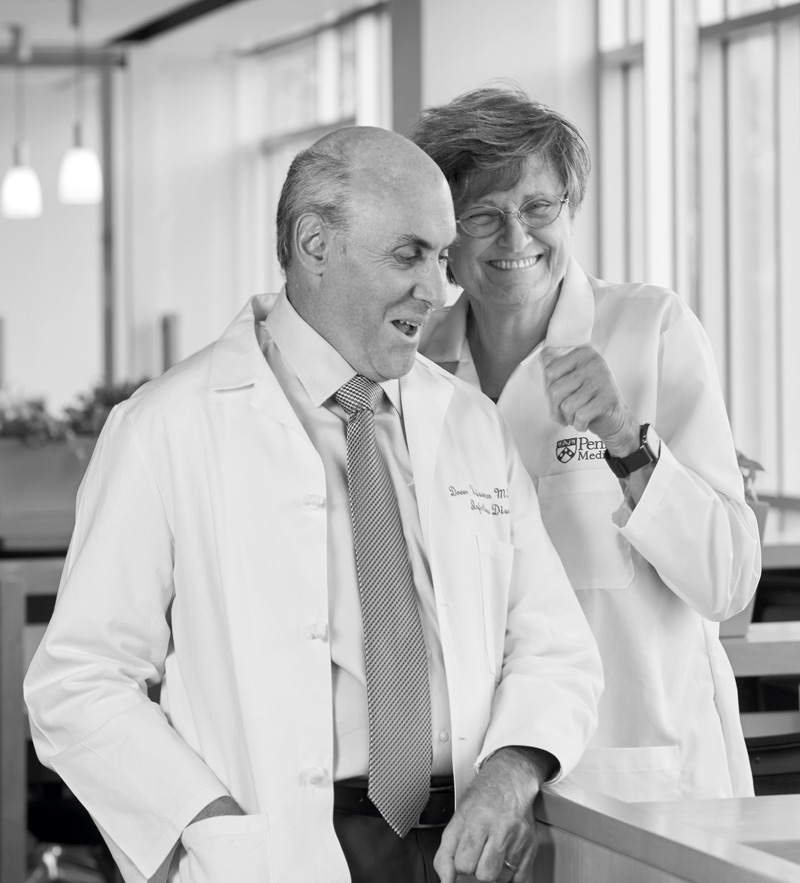
Peggy Peterson Photography, Courtesy Penn Medicine
Karikó and Weissman initiated the collaboration that led to their Nobel Prize in Medicine in the 1990sPeggy Peterson Photography, Courtesy Penn MedicineThe time lag between the publication of groundbreaking research in a given field and its recognition with a Nobel Prize has grown significantly longer since the 1960s, particularly in Chemistry, Physics, and Physiology or Medicine. Between 2011 and 2019, the average time to receive the prize was over 25 years, according to a report published on September 29 in Nature. The average lag was shorter in Physiology or Medicine, at 26 years, and longer in Chemistry, at 30 years.
This year was no exception, other than for the Physiology or Medicine prize, which honored discoveries published less than 20 years ago. In 2023, the prize amount in the six categories—Physics, Chemistry, Peace, Literature, Economics, and Physiology or Medicine—was 11 million Swedish crowns (approximately R$5 million). There were 11 winners, including four women—the same number as in 2018 and 2020, and only slightly lower than in 2009 when there were five women laureates.
Physiology or medicine
On October 4, a team led by Santuza Teixeira, a biochemist at the Federal University of Minas Gerais (UFMG), presented research results for a potential vaccine against cutaneous leishmaniasis at a conference of the Brazilian Society of Immunology—leishmaniasis is an infection caused by protozoa that produces lesions on the skin and cartilage. The formulation was tested in mice using messenger RNA (mRNA) to stimulate the rodents’ bodies to produce a protein fragment that triggers their defense system to attack the protozoa. Animals that received the formulation had 10 to 100 times fewer parasites in their lesions compared to those treated with placebo. “It’s a significant result, but there’s room for improvement,” says biochemist Gabriela Burle Caldas, who presented the data at the conference.
Two days prior, the Nobel Prize in Physiology or Medicine had been awarded to the researchers who pioneered the development of mRNA-based vaccines. Hungarian biochemist Katalin Karikó, 68, and American immunologist Drew Weissman, 64, both affiliated with the University of Pennsylvania, shared the prize equally.
Karikó began her scientific career in Hungary and later migrated to the US in the late 1980s. At the University of Pennsylvania, her initial work focused on developing mRNA-based therapies for treating stroke, but she struggled to secure funding. In 1997, she formed a collaboration with Weissman, who was then exploring new strategies for developing a vaccine against the AIDS virus.
Without Karikó’s and Weissman’s breakthrough, the development of mRNA vaccines would not have been possible
Available vaccines at the time were typically derived from whole pathogens or their proteins to stimulate the defense system’s response. However, they required the cultivation of large quantities of cells. Seeking alternatives, one approach involved mRNA molecules. The concept was to develop a vaccine with laboratory-produced mRNA coding for a protein that triggers an immune response against a specific pathogen. Within the body, the mRNA would reach the cells and initiate the production of the defense-activating protein.
However, the synthetic version of these molecules proved to be unstable. As soon as it entered the body, it was recognized as an invader and promptly destroyed. Furthermore, it induced intense inflammation that obliterated the very cells it was meant to protect. Karikó and Weissman observed that this inflammatory response occurred because the naturally produced mRNA in mammalian cells had a slight chemical alteration absent in the laboratory version. They successfully worked around this issue by modifying the synthetic molecule.
“Their discovery paved the way for safe mRNA vaccines with enhanced immunogenicity,” explains microbiologist Luís Carlos de Souza Ferreira from the University of São Paulo (USP).
During the COVID-19 pandemic, the new technology was licensed to pharmaceutical companies Moderna and Pfizer/BioNTech—Karikó has been the senior vice president of BioNTech since 2019—to support the production of two of the most effective vaccines against the novel coronavirus. “Without Karikó’s and Weissman’s breakthrough, the development of mRNA vaccines would not have been possible,” says Teixeira from UFMG. Presently, Ferreira’s team at USP is evaluating the performance of a potential mRNA vaccine developed in collaboration with Karikó’s group to treat cancer caused by the human papillomavirus (HPV) (see Pesquisa FAPESP issue nº 326).
Physics and chemistry
This year’s Nobel Prizes in Physics and Chemistry were awarded for research that has provided a better understanding of the behavior of matter at the subatomic level.
French physicists Anne L’Huillier from Lund University, in Sweden, and Pierre Agostini from Ohio State University, in the US, along with Hungarian-Austrian Ferenc Krausz from the Max Planck Institute of Quantum Optics, in Germany, shared the Nobel Prize in Physics for their development of methods to generate attosecond pulses of light.
An attosecond is equivalent to one billionth of one billionth of a second. Measurements on this timescale can be used to detect when electrons within atoms and molecules move or change energy. For the human senses, rapid movements such as these are perceived as being blurred together. Prior to the work of the trio of physicists, measurements involving light pulses had never gone below the femtosecond range (1 femtosecond equals 1,000 attoseconds).
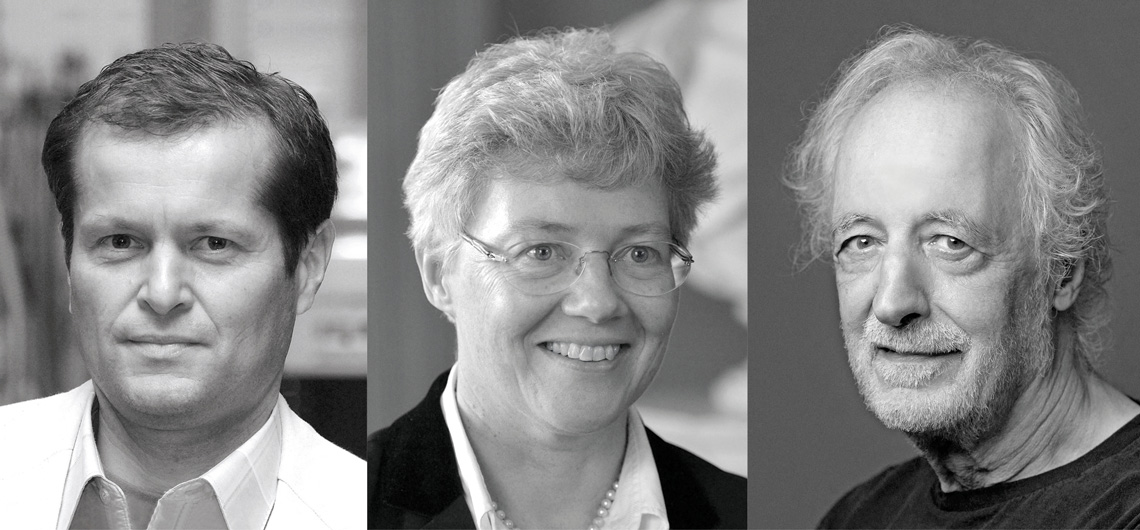
Thorsten Naesersource / Max-Planck-Institut Für Quantenoptik | Bengt Oberger / Wikimedia Commons | Joel Saget/AFP via Getty Images
Krausz, L’Huillier, and Agostini discovered how to generate attosecond pulses of lightThorsten Naesersource / Max-Planck-Institut Für Quantenoptik | Bengt Oberger / Wikimedia Commons | Joel Saget/AFP via Getty Images“Attosecond physics deals with matter under extreme conditions, using high-intensity lasers and extremely short timescales,” remarks Brazilian physicist Carla Figueira De Morisson Faria from University College London in the UK, who is currently conducting research in this area. “This field encompasses various branches where real-time control of electrons is gradually becoming a reality.”
Starting in 1987, seminal research by 65-year-old L’Huillier laid the foundations for attosecond science. In experiments over the following decades, she and her Nobel-winning colleagues characterized and learned to manipulate the phenomena that ultimately enabled them to generate attosecond light pulses. In Austria, 61-year-old Krausz’s group developed a technique to isolate a single light pulse that lasted 650 attoseconds. Meanwhile, in the US, a team led by 82-year-old Agostini, using similar approaches, was able to measure pulses lasting 250 attoseconds.
In electronics, these techniques can be valuable for understanding and controlling how electrons behave in a material. In medicine, they can also be used in diagnostic imaging.
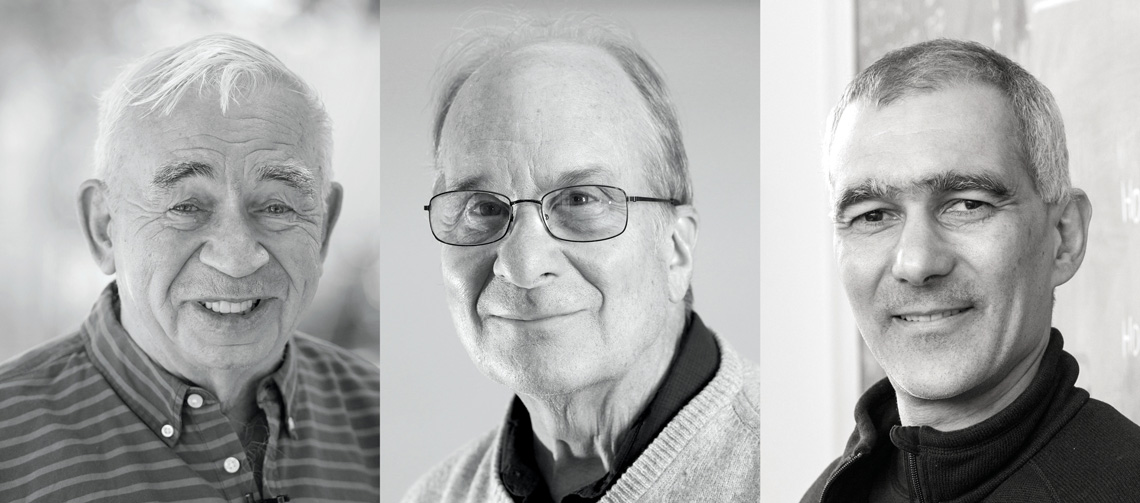
Wilfredo Lee / Associated Press / Imageplus | Columbia University | Justin Knight / MIT
Ekimov, Brus, and Bawendi won the Nobel Prize in Chemistry for their discovery of quantum dotsWilfredo Lee / Associated Press / Imageplus | Columbia University | Justin Knight / MITThe Nobel Prize in Chemistry was jointly awarded to 78-year-old Russian physicist Alexei Ekimov at Nanocrystals Technology, 89-year-old American chemist Louis Brus from Columbia University, and 62-year-old Franco-Tunisian chemist Moungi Bawendi from the Massachusetts Institute of Technology (MIT). The trio was recognized for their discovery of quantum dots and ways to synthesize them with precision.
Quantum dots are extremely minute particles, with diameters in the range of a few nanometers (1 nanometer is one millionth of a millimeter). Their tiny size gives them a unique characteristic: their physical and chemical properties are size-dependent, whereas the properties of larger particles are determined solely by chemical composition. As a result, quantum dots of the same composition but different sizes can emit light in different colors.
In the 1980s, Ekimov discovered that the color of glass changes with the size of semiconductor quantum dots. Brus observed a similar phenomenon in particles suspended in liquids, during his research on catalytic properties. In the 1990s, Bawendi, who had completed a postdoctoral fellowship under Brus, developed precise methods for synthesizing quantum dots.
The size of quantum dots affects their physical and chemical properties
“Blue light is the most difficult to produce,” notes physicist Éder Guidelli from USP’s Ribeirão Preto School of Philosophy, Sciences, and Languages and Literature (FFCLRP). In 2017, during a one-year stay at MIT in a lab affiliated with Bawendi, Guidelli successfully engineered zinc selenide nanoparticles to emit blue light. Currently, Guidelli is investigating a different type of nanoparticle in cancer research.
Maria del Pilar Sotomayor, a Peruvian chemist at São Paulo State University’s (UNESP) Araraquara campus, is exploring the use of quantum dots for cancer diagnostics.
Economics and peace
Two of this year’s prizes recognized the significant roles played by women in advocacy for women’s rights.
American economist Claudia Goldin, 77, from Harvard University, received the Nobel Prize in Economics for her research on female participation in the US labor market over the centuries and her contributions to understanding the causes of wage inequality between men and women.
“Women are vastly underrepresented in the global labor market and, when they work, they earn less than men. Claudia Goldin has trawled the archives and collected over 200 years of data from the US, allowing her to demonstrate how and why gender differences in earnings and employment rates have changed over time,” wrote the Royal Swedish Academy of Sciences in a press release.
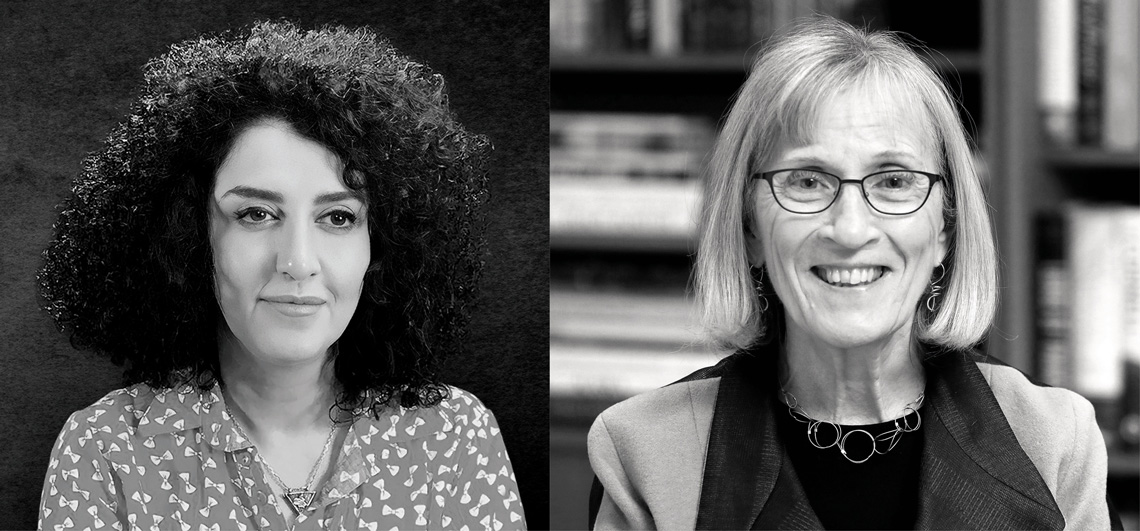
Voice of America / Wikimedia Commons | Wikimedia
Mohammadi, the winner of the Nobel Peace Prize, and Goldin, who won the prize in EconomicsVoice of America / Wikimedia Commons | Wikimedia“Goldin’s contributions were in two key areas: addressing wage and labor market participation disparities between men and women in the US and examining the role of education in explaining the wage gap in the country,” says Naercio Menezes Filho, an economist who heads the FAPESP-funded Center for Applied Research on Early Childhood at INSPER.
The Nobel Peace Prize was awarded to 51-year-old Iranian Narges Mohammadi. A physicist and activist, she is currently imprisoned in Iran for her advocacy of democratic principles and basic human rights, especially for women—a commitment she has held since her college days.
“Even in prison, Mohammadi remains a leading figure, a symbol of what it means to be a freedom fighter,” said Norwegian lawyer Berit Reiss-Andersen when announcing the award.
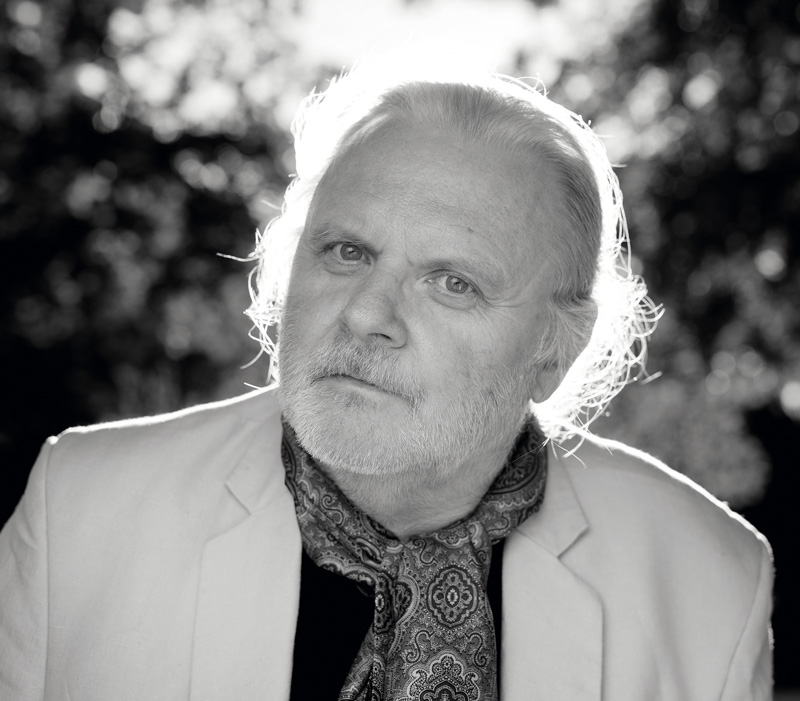
Agnete Brun / Det Norske Samlaget
Fosse has published more than 50 works in NynorskAgnete Brun / Det Norske SamlagetLiterature
The Norwegian writer, playwright, poet, and translator Jon Fosse, 64, received the Nobel Prize in Literature for 2023. The Swedish Academy honored him for his “innovative plays and prose which give voice to the unsayable,” and for how, “in his radical reduction of language and dramatic action, he exposes human anxiety and ambivalence at its core.” Born in 1959 in Haugesund, Fosse writes in Nynorsk, one of the two official written standards of Norwegian, used by 10% to 15% percent of the population.
Fosse has written over 50 works, with three books published in Brazil: Melancholy (Tordesilhas, 2015), Aliss at the fire (Companhia das Letras, 2023), and A shining (Fósforo, 2023). Fosse is renowned in Norway as a playwright. “He has the largest number of plays to his name after Ibsen,” says Lucas Lazzaretti, a postdoctoral researcher in Swedish literature and drama at the Federal University of Paraná (UFPR).
Essays on why geologists sometimes lick rocks and studies on the sexual activity of anchovies were some of the winners of this year’s Ig Nobel Prize
On September 14, the Ig Nobel Prize ceremony celebrated “achievements that first make people laugh, then make them think.” This year’s edition presented prizes in 10 categories. Below are some of the zany prize-winning projects.
Jan Zalasiewicz, a British-Polish geologist, won the Chemistry and Geology Ig for explaining why, 200 years ago, geologists lacking technological resources would lick rocks to identify them. In a 2017 essay in The Palaeontology Newsletter, Zalasiewicz revisited accounts from Italian mineralogist Giovanni Arduino (1714–1795), who could distinguish the taste of different fossiliferous contexts and attribute them to geological and stratigraphic aspects. “They did geology, at least in part, by taste and it worked for them,” explained Zalasiewicz, who claims to have licked many stones on field trips to determine their attributes before examining them under a magnifying glass.

Reproduced / Youtube Improbable Research
The organizers of the award ceremony against a virtual backdropReproduced / Youtube Improbable ResearchThe Literature prize went to researchers from France, the UK, Malaysia, and Finland who observed what subjects felt when asked to “repeat a single word many, many, many, many, many times.” The paper, exploring the phenomenon of jamais vu, was published in 2021 in Memory.
In Medicine, the prize recognized researchers from the US, Canada, Iran, Vietnam, and Macedonia who used cadavers as a means to explore whether there is an equal number of hairs in each of a person’s two nostrils. Their findings were reported in a 2022 article in the International Journal of Dermatology. Their goal was to determine the health effects of lost nose hairs—one of the body’s defense mechanisms against diseases—in people with alopecia, or extreme hair loss.
Researchers from Spain, Galicia, Switzerland, France, and the UK were honored with the Physics prize “for measuring the extent to which ocean-water mixing is affected by the sexual activity of anchovies,” as reported in a 2022 paper in Nature Geoscience.